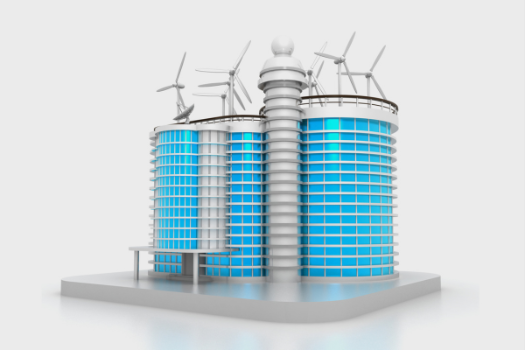.png)
Why General Contractors Need BIM
Building Information Modeling (BIM) is changing how construction projects are managed. For general contractors, adopting BIM can make a huge difference. BIM offers a detailed 3D view of projects, helping everyone understand and collaborate better. It streamlines workflows, cuts costs, and helps manage risks. As more companies see these benefits, BIM is becoming a must-have tool in construction. This blog will explore why BIM is essential for general contractors and how it can transform your projects.
Enhanced Project Visualization
One of the biggest benefits of BIM is enhanced project visualization. Traditional blueprints can be hard to interpret, but BIM provides a clear, 3D model of the entire project. This 3D view helps everyone involved understand the design better.

With BIM, you can see how different elements fit together before construction starts. This reduces misunderstandings and mistakes. Imagine being able to walk through a virtual version of the project before any work begins. This makes it easier to spot potential issues and make changes early on.
The detailed visualizations also help in meetings and presentations. Clients, architects, and contractors can all see exactly what the final project will look like. This helps everyone stay on the same page and can lead to faster approvals.
For example, a project that used BIM for visualization was able to catch a major design flaw early, saving time and money. The team avoided costly changes by identifying the issue before construction began.
Overall, BIM’s ability to provide clear, accurate, and interactive visualizations makes it a powerful tool for any general contractor. It helps prevent costly errors and ensures everyone understands the project from the start.
Improved Coordination and Collaboration
BIM greatly enhances coordination and collaboration among project teams. In construction, many different trades and teams must work together. BIM helps by providing a shared platform where everyone can access the same information.

With BIM, you can see all the elements of a project in one place. This means that architects, engineers, and contractors can all work from the same model. It helps spot conflicts between different systems early on. For example, if electrical wiring clashes with plumbing, BIM will show this before construction starts.
Real-time updates in BIM allow everyone to see changes as they happen. This keeps all team members informed and helps avoid mistakes that can happen when updates are not shared.
BIM also improves communication by providing clear, detailed visuals that everyone can understand. This makes meetings more productive and helps resolve issues quickly.
A real-life example is a project where BIM’s clash detection feature prevented a costly delay. By spotting and fixing issues before construction began, the team avoided rework and stayed on schedule.
In summary, BIM improves coordination and collaboration by providing a single source of truth for the project. This leads to fewer conflicts, better communication, and a smoother construction process.
Increased Efficiency and Cost Savings
BIM significantly boosts efficiency and saves costs on construction projects. By streamlining workflows, BIM helps teams work faster and smarter. One major advantage is that it reduces the time spent on planning and coordination.
With BIM, you have accurate, up-to-date information about materials, labor, and timelines. This helps in creating precise estimates and avoiding costly surprises. For instance, knowing exactly what materials are needed prevents overordering or underordering, which saves money.

BIM also automates many processes. Tasks that once took hours can now be done quickly and accurately with BIM tools. This speeds up project timelines and reduces the need for manual calculations and adjustments.
Moreover, BIM helps in managing and tracking project costs more effectively. You can see how changes affect the budget in real time. If you make adjustments, BIM shows how these changes impact overall costs.
An example of BIM’s cost-saving benefits is a project where BIM helped avoid rework by identifying design issues early. This not only saved time but also prevented additional expenses related to fixing errors during construction.
In summary, BIM enhances efficiency and saves costs by providing accurate information, automating processes, and improving cost management. It helps general contractors complete projects on time and within budget, making it a valuable tool for any construction project.
Better Risk Management
BIM is a powerful tool for better risk management in construction projects. It helps identify and address potential issues before they become major problems. By using BIM, you can model different scenarios and see how they might impact the project.
One key feature of BIM is its ability to detect clashes between different systems. For example, if the HVAC system and plumbing pipes interfere with each other, BIM will highlight these conflicts early. This allows you to resolve issues in the planning stage, reducing the risk of costly delays and changes during construction.
BIM also helps in assessing project risks by providing detailed simulations. You can test different scenarios, like changes in design or construction methods, to see their effects. This helps you plan for potential problems and develop strategies to handle them.
For instance, a project using BIM was able to foresee and mitigate the impact of adverse weather conditions. By planning for these scenarios in advance, the team avoided delays and kept the project on track.
Additionally, BIM’s comprehensive data helps in managing safety risks. By visualizing the construction site in 3D, you can better plan for safety measures and ensure compliance with regulations.
In summary, BIM enhances risk management by detecting conflicts early, simulating different scenarios, and improving safety planning. This leads to fewer surprises, better planning, and a smoother construction process.
Future-Proofing the Construction Process
BIM is key to future-proofing the construction process. As technology evolves, BIM helps general contractors stay ahead of the curve. It integrates well with emerging technologies like IoT (Internet of Things) and AI (Artificial Intelligence).
By adopting BIM, you’re preparing your business for future advancements. For example, BIM can work with smart building technologies, allowing for real-time monitoring and adjustments. This means your projects can adapt to new tech seamlessly.
BIM also supports ongoing improvements. As new tools and software are developed, BIM’s flexible platform allows for easy updates and integrations. This ensures that your processes remain up-to-date and efficient.
An example is how BIM’s data can be used for predictive maintenance. By analyzing data from the BIM model, you can foresee potential issues and address them before they become problems.
In summary, BIM not only enhances current project management but also sets you up for future success. It helps you stay current with technology, ensuring your projects are always at the cutting edge.
Conclusion
In conclusion, adopting BIM is essential for general contractors. It enhances project visualization, improves coordination, boosts efficiency, and manages risks better. By using BIM, you can streamline your workflows, save costs, and stay ahead of future technological advancements.
BIM’s clear 3D models and real-time updates make communication easier and reduce errors. Its ability to integrate with new technologies prepares your business for future innovations.
Embracing BIM means investing in a more efficient, cost-effective, and future-ready construction process. If you want to transform your projects and stay competitive, adopting BIM is a crucial step forward.